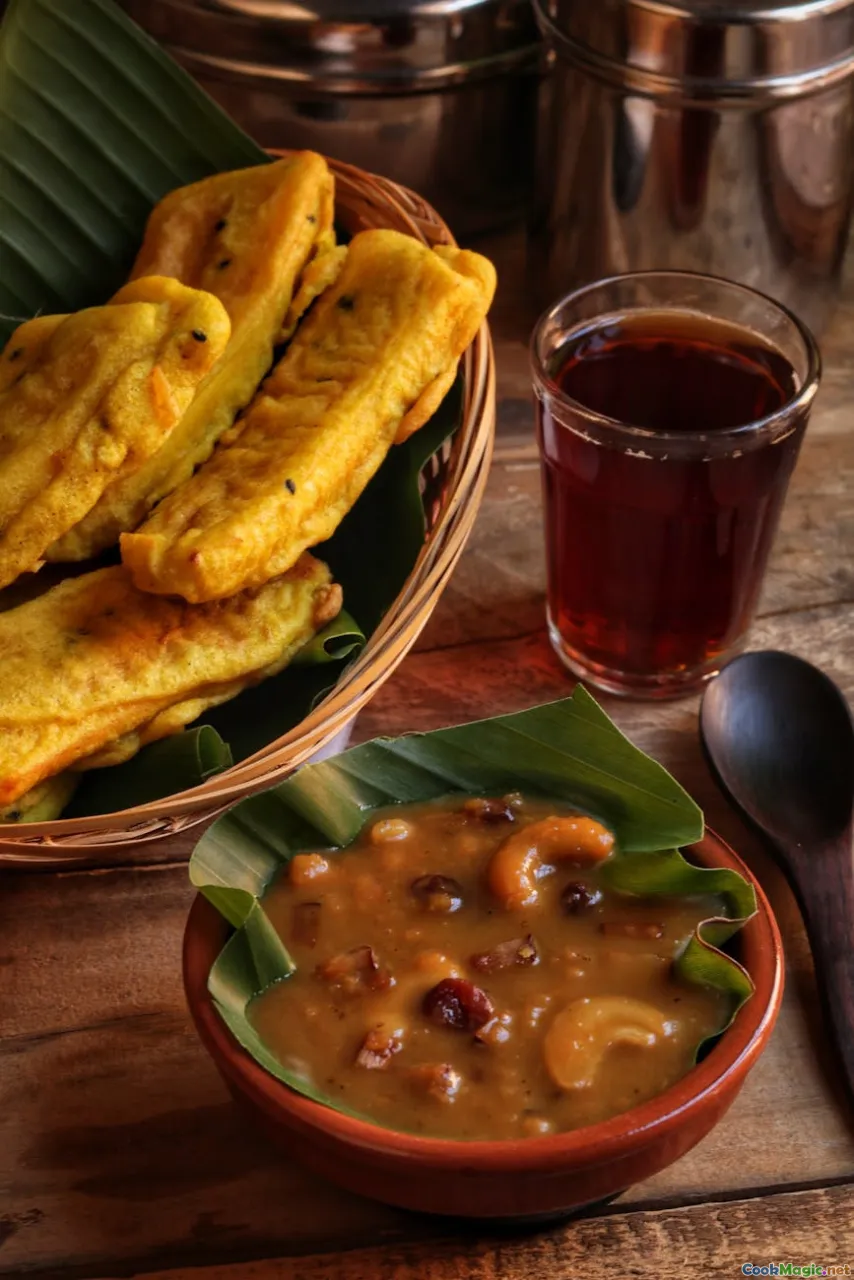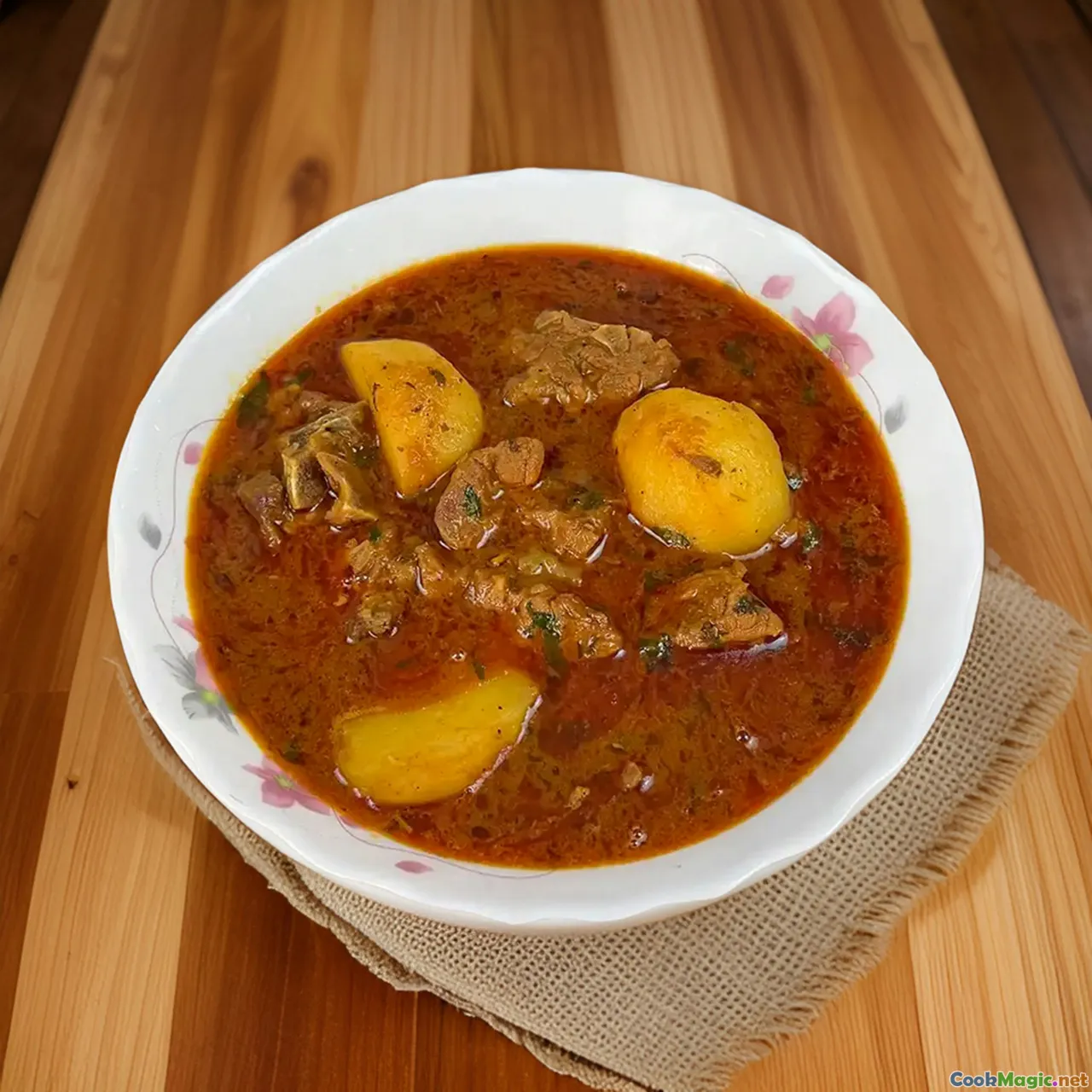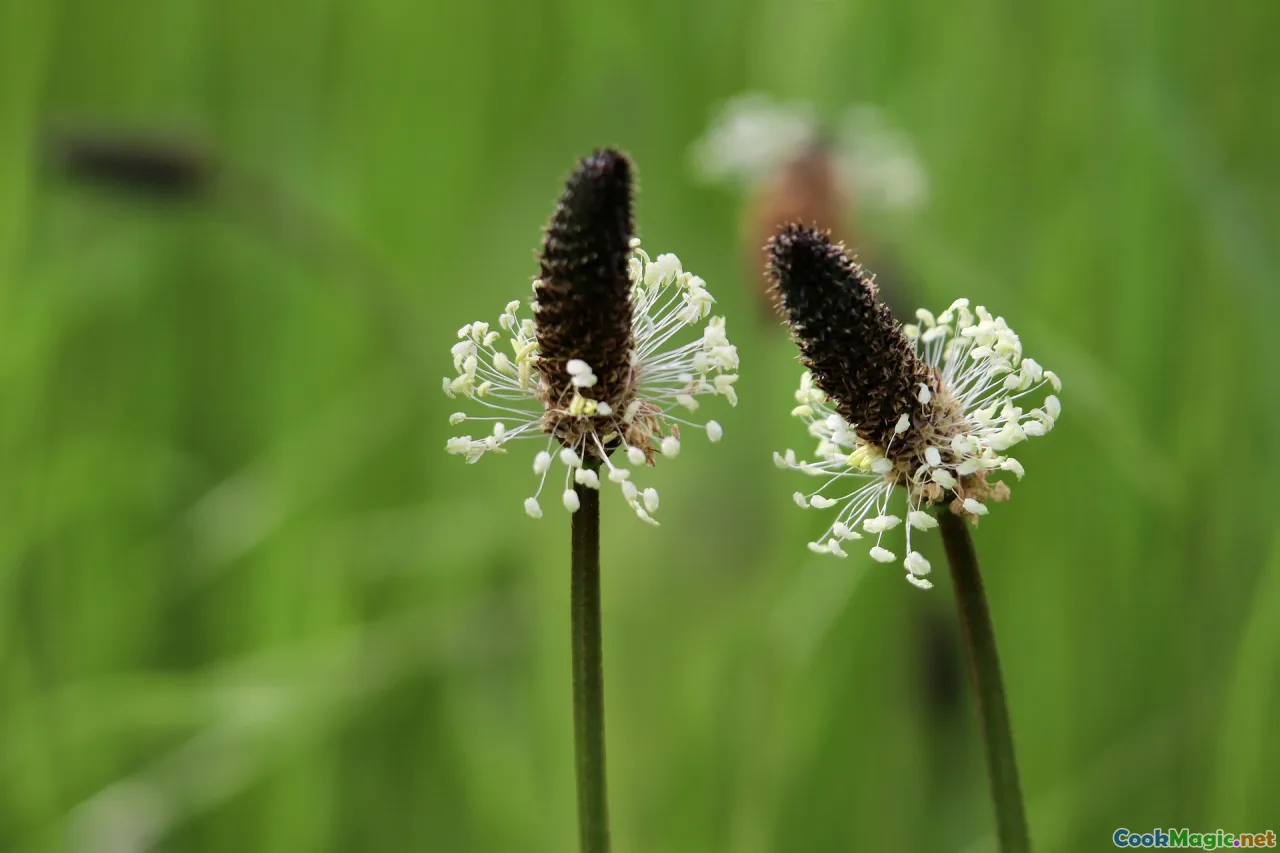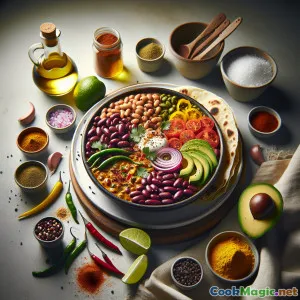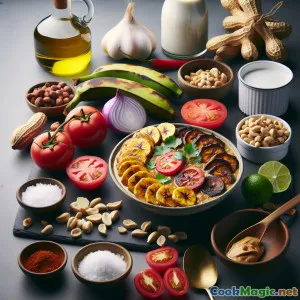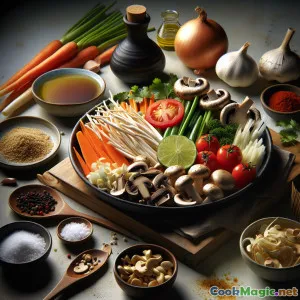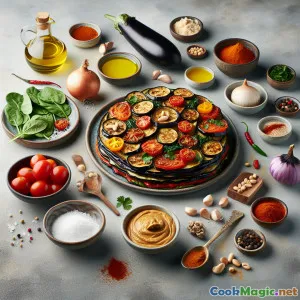
قدر حصاد الماتوك: يخنة الموز الأوغندية
(Matooke Harvest Pot: Ugandan Plantain Stew)
(0 المراجعات)المكونات
-
6 large ماتوك (موز الطهي الأخضر)
(قشر ومقطع إلى شرائح سميكة)
-
3 medium طماطم
(مقطع إلى مكعبات)
-
1 large بصل أحمر
(مفروم ناعماً)
-
2 medium الجزر
(مقطع إلى دوائر)
-
1 large الفلفل الحلو (الفلفل الكرنيبي)
(مبشور ومقطع إلى مكعبات)
-
1 tbsp زنجبيل طازج
(مبشور)
-
3 cloves ثوم
(مفروم)
-
1/4 cup الكزبرة الطازجة (السيلانترو)
(مفروم، للتزيين)
-
2 tsp مسحوق الكاري
(خفيف أو حار، حسب الذوق)
-
2 tbsp زيت نباتي
(يفضل زيت عباد الشمس أو زيت الكانولا)
-
700 ml مرق الخضار
(يمكن استبدال مرق الدجاج بمرق غير نباتي)
-
1/2 tsp كركم مطحون
(لللون ونكهة ترابية خفيفة)
-
1 tsp ملح
(حسب الذوق)
-
1/2 tsp فلفل أسود
(مطحون طازجًا أو حسب الذوق)
-
1 tbsp عصير الليمون
(يضاف قبل التقديم)
-
200 grams الفاصوليا (الفاصوليا الكلوية أو زبدة الفاصوليا)
(مطهوى، لزيادة البروتين)
(قشر ومقطع إلى شرائح سميكة)
(مقطع إلى مكعبات)
(مفروم ناعماً)
(مقطع إلى دوائر)
(مبشور ومقطع إلى مكعبات)
(مبشور)
(مفروم)
(مفروم، للتزيين)
(خفيف أو حار، حسب الذوق)
(يفضل زيت عباد الشمس أو زيت الكانولا)
(يمكن استبدال مرق الدجاج بمرق غير نباتي)
(لللون ونكهة ترابية خفيفة)
(حسب الذوق)
(مطحون طازجًا أو حسب الذوق)
(يضاف قبل التقديم)
(مطهوى، لزيادة البروتين)
التغذية
- الحصص: 4
- حجم الحصة: وعاء واحد (حوالي 350 جم)
- Calories: 350 kcal
- Carbohydrates: 65 g
- Protein: 7 g
- Fat: 7 g
- Fiber: 10 g
- Sugar: 15 g
- Sodium: 760 mg
- Cholesterol: 0 mg
- Calcium: 75 mg
- Iron: 1.8 mg
التعليمات
-
1 - تحضير المكونات:
قشر الماتوكو جيدًا، قطعه إلى شرائح سميكة وضعه جانبًا في الماء (لمنع تغير لونه). افرم جميع الخضروات واشطف الفاصوليا إذا كنت تستخدمها.
-
2 - تحمير النكهات:
سخن الزيت النباتي في قدر كبير على نار متوسطة. أضف البصل وقم بتشويحه حتى يصبح شفافًا، ثم أضف الثوم والزنجبيل وقلّبه لمدة دقيقة حتى تفوح رائحته.
-
3 - تطوير النكهة:
أضف مسحوق الكاري والكركم (إذا كنت تستخدمه) والفلفل الأسود إلى خليط البصل، وقلّب لمدة دقيقة أخرى لإطلاق النكهات.
-
4 - إضافة الخضروات:
أضف الطماطم المقطعة، الفلفل الحلو والجزر. قلّب حتى تطرى الطماطم ويصبح المزيج سميكًا، حوالي 5–7 دقائق.
-
5 - يطهى مع الماتوكوي على نار هادئة:
أضف شرائح الماتوك إلى قاعدة النكهة وقلّب لتغطيتها. صب مرق الخضروات، أضف الفاصوليا (إذا كانت مستخدمة)، واتركها تغلي. اطبخ بدون غطاء على نار متوسطة-منخفضة، مع التحريك بين الحين والآخر، حتى يصبح الماتوك ناعماً عند الاختبار بالشوكة ويثخن الحساء.
-
6 - تتبيل وتقديم:
تذوق وضبط الملح. أضف عصير الليمون إذا رغبت. زين بالكزبرة الطازجة وقدم وهو ساخن.
قشر الماتوكو جيدًا، قطعه إلى شرائح سميكة وضعه جانبًا في الماء (لمنع تغير لونه). افرم جميع الخضروات واشطف الفاصوليا إذا كنت تستخدمها.
سخن الزيت النباتي في قدر كبير على نار متوسطة. أضف البصل وقم بتشويحه حتى يصبح شفافًا، ثم أضف الثوم والزنجبيل وقلّبه لمدة دقيقة حتى تفوح رائحته.
أضف مسحوق الكاري والكركم (إذا كنت تستخدمه) والفلفل الأسود إلى خليط البصل، وقلّب لمدة دقيقة أخرى لإطلاق النكهات.
أضف الطماطم المقطعة، الفلفل الحلو والجزر. قلّب حتى تطرى الطماطم ويصبح المزيج سميكًا، حوالي 5–7 دقائق.
أضف شرائح الماتوك إلى قاعدة النكهة وقلّب لتغطيتها. صب مرق الخضروات، أضف الفاصوليا (إذا كانت مستخدمة)، واتركها تغلي. اطبخ بدون غطاء على نار متوسطة-منخفضة، مع التحريك بين الحين والآخر، حتى يصبح الماتوك ناعماً عند الاختبار بالشوكة ويثخن الحساء.
تذوق وضبط الملح. أضف عصير الليمون إذا رغبت. زين بالكزبرة الطازجة وقدم وهو ساخن.
المزيد عن : قدر حصاد الماتوك: يخنة الموز الأوغندية
Matooke Harvest Pot: The Heart of Ugandan Home Cooking
Matooke Harvest Pot is a celebratory, warming stew deeply rooted in Ugandan culture—and a quintessential experience for anyone seeking to explore the heart of East African cuisine. At its core, this dish relies on "matooke", a unique variety of cooking banana endemic to Uganda’s highlands, which transforms during extended simmering into a creamy and lightly sweet comfort food. While plantains can be used elsewhere, true matooke has a subtler flavor and a remarkable capacity to absorb and meld savory spices.
History and Cultural Significance
In Uganda, matooke is not just an ingredient—it's an institution. For centuries, it has served as a hearty foundation for the daily diet, especially among the Baganda people. Traditionally, matooke is peeled, wrapped in banana leaves, then steamed until tender and mashed, often accompanied by a mild stew. My version melds this tradition with communal stew-making: the "pot" approach allows for versatility, the addition of other harvest vegetables, and accommodates both contemporary busy lives and family gatherings.
Going beyond its humble reputation, matooke dishes are often present at festive occasions—weddings, family reunions, and public feasts—symbolizing abundance, hospitality, and the link to the land. The harvest season is savored together in large community pots like this one, using whatever fresh produce is at hand.
Unique Aspects & Adaptability
What makes the Matooke Harvest Pot unique among stews is its texture:
- As the thick-cut matooke simmers, it soaks up aromatic tomato, attains an earthy warmth from turmeric and curry, and ultimately breaks down to immaculate softness, thickening the broth into something akin to a light risotto.
- Unlike soups, you want a jab of fork or spoon to encounter pillowy pieces amidst the broth, not liquid alone or a fine mash.
Because matooke is relatively mild beyond its unique flavor, the recipe embraces tweaks and improvisation. Beans for protein, sweet pepper for color, whatever’s fresh from your market garden! The lemon finish brightens the pot just before serving, a gentle nod to east African flavor balances.
Tips and Notes:
- Matooke vs. Plantain: If outside Africa and matooke is unobtainable, green (unripe) plantains work almost as well—just avoid ripe bananas or sweet plantains.
- Avoid Discoloration: Peeled matooke browns quickly. Drop cut pieces immediately into water with a bit of lemon or vinegar to minimize this.
- Make It Protein-Rich: If vegetarian, toss in any cooked beans (kidney, white, or cowpeas). Meat eaters sometimes enrich the broth with smoked fish or goat, hearty in true Ugandan style.
- Meal served communal-style: For a shared experience, serve directly from pot at the table, encouraging everyone to help themselves. It fosters the same spirit of abundance and friendliness Kenyan and Ugandan cuisine celebrates.
Evolving Tradition
Few African dishes allow for so much of what grows nearby to shine, what flavors you have on hand, or what you wish to share. Ultimately, the Matooke Harvest Pot is comfort food that’s simple to assemble, yet radiant with the spirit of sharing, flexibility, and homespun warmth. Serve it alongside hot chapati or simple steamed green vegetables to experience real Ugandan hospitality.
Whether you’re exploring new worlds from your own table, reducing meat intake, or honoring food memories from another continent, this recipe is hearty, nourishing and ever adaptable—the mark of a truly beloved dish.

